- March 12, 2023
- Posted by: Arina Cheusova
- Category: Blog
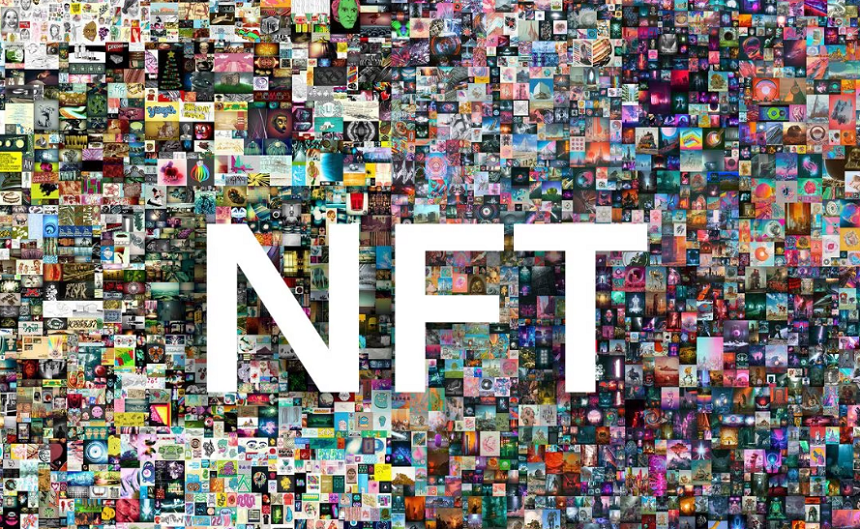
How to Create NFT Art Without Coding?
With NFTs or non-fungible tokens being digital assets, there’s a common misconception that you need coding knowledge to create them. While this is true for some NFTs, it doesn’t apply to all of them, and if you’re a regular artist looking to make your next art project a digital asset, you can skip coding school altogether. However, if this is you, the question, “how to create NFT art without coding?” will be among the first to pop up in your mind. Fortunately, we can help with the guide below, telling you all you need to know.
Reasons for Creating NFT Art
As an artist, you may have a good thing going with your work selling for impressive prices. With that, it may be hard to see any potential benefits for getting into NFTs and digital assets in general. However, just because you can’t think of them immediately doesn’t mean they’re not there. Below are a few examples.
Royalties for Life
Historically, artists have earned very little in their lifetimes with the art they make and sell appreciating over time. Consequently, the people who make the most money are resellers who buy the art from the artist and sell it to someone else. There have even been cases of some artists dying poor while some of their previous work is worth millions.
This may have changed today for musicians and other types of artists, but for people who paint and draw, the status quo remains the same. Getting into non-fungible tokens offsets some of the risks, and instead of earning a one-time figure when you initially sell the art, you can continue earning royalties throughout your lifetime.
You only have to program royalties into the art, and voila, a lifetime of earnings. Notably, NFT royalties can be set anywhere from 2.5% to 10%, and if, for some reason, the price of your work multiplies in the future, you could be looking at several good paydays.
In some cases, you might need to learn a bit of coding to program the royalties into the art. You can pick up the little knowledge needed from a book without ever needing to step into a class. Fortunately, the best programming books on the market make coding easy to understand, and we’ve provided a list of a few that fit those criteria.
More Affordable to Start
Also, artists typically have to deal with the logistical costs of selling their work. Often this includes hiring out a gallery, paying for auction house facilitation, and sometimes even transport to the buyer’s residence. These are not things you need to worry about with NFTs.
They are sold in online peer-to-peer marketplaces and are available globally. With that, you widen your pool of potential buyers and can keep most of the proceeds from the sale.
Verifiable and Authentic
Verifying whether a piece of art is authentic has been another problem plaguing the sale of art in previous centuries. With NFTs, it becomes much easier even when others can download or link to your art because it has a certificate of authenticity.
Notably, the certificate of authenticity contains information on the art creator, owners, and acquisition prices over the years. With that kind of transparency and verifiability, both you and the buyers of the NFT can always keep a tab on where it goes and who owns it.
How to Create NFT Art With No Coding
As with everything, if you think about getting every little detail right while preparing to make an NFT without coding, you’ll never get anything done. The best approach is to get right into it. You’ll pick up a few things as you go along. That said, the blueprint below highlights the best approach to making and selling your first NFT.
Step 1: Select an NFT Marketplace
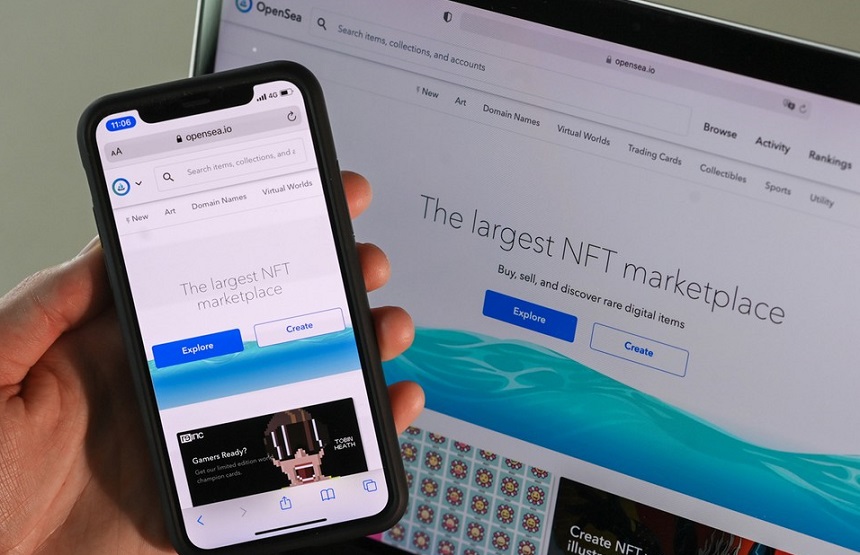
To create an NFT without coding, you’ll need an NFT marketplace that supports such functionality. While there are many, they mainly fall into two categories, each with its perks and disadvantages, as shown below.
- Curated Platforms
Curated platforms are great once you’re more familiar with the process and will often have high-quality NFTs. With that reputation, they may also allow you to sell your artwork for more. Nevertheless, the fact that they don’t typically have simple low-quality NFTs may work against you if this is your first time trying.
Only authorized artists can create NFTs on these curated platforms, so there may be some red tape before you’re allowed in. Another negative is the higher transaction fees to facilitate token sales. Lastly, they may place a cap on the royalty percentages you can add to your artwork.
SuperRare is one of the current top examples of a curated NFT marketplace.
- Self-Service Platforms
There is less “gatekeeping” with self-service platforms like Rarible and OpenSea. Therefore, almost anyone can join and start producing NFT art right away. Also, there are no limitations to the type of art you can use.
On the other hand, curated platforms like SuperRare may not accept some NFT styles like memes and often take a long time to review NFTs before they put them up for sale. Self-service makes great for test runs, and there are no caps on the royalty percentages, so if by some chance your art sells for big bucks, you can make more.
Step 2: Set Up a Digital Wallet
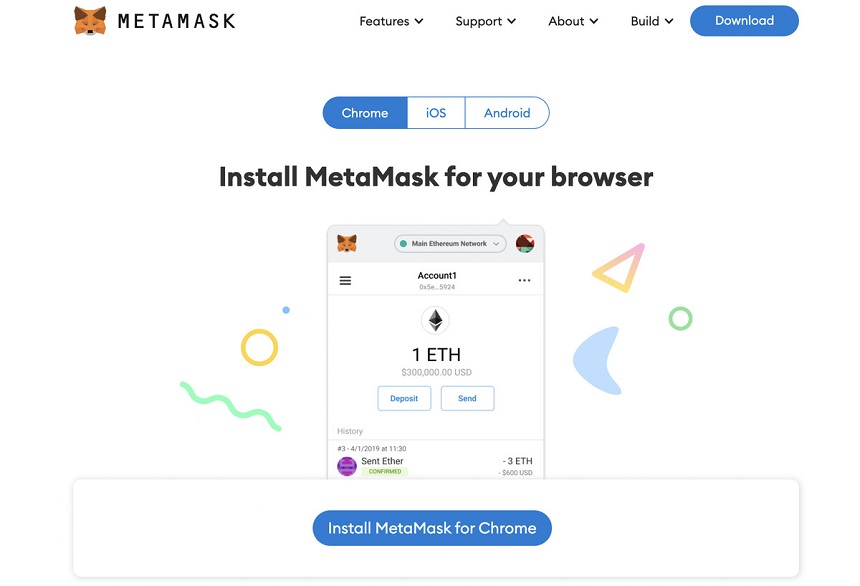
Having a digital wallet is also essential to facilitating your NFT journey and will allow you to store your digital assets. Ethereum cryptocurrency is essential for building an NFT portfolio with many NFTs created on the ETH blockchain.
Also, you’ll need Ethereum to facilitate the gas fee for listing any of your tokens you make for sale. The type of digital wallet may also depend on the NFT marketplace you choose. OpenSea, for instance, recommends the MetaMask cryptocurrency wallet, which you can access via a Google Chrome extension.
You can use the MetaMask wallet to purchase Ethereum as you’re getting ready to create your NFTs. Those with other cryptocurrency wallets just need to transfer some of their Ethereum to the new MetaMask wallet.
Paying for NFT gas can cost between $10 and $200 worth of Ethereum. According to CNBC, Ether prices have dropped after a network upgrade, so it may be even cheaper.
Step 3: Create Your Collection
This step is more or less like creating a folder on your desktop, only this time it’s a folder on your OpenSea or other NFT platform account. On the OpenSea platform, it’s as easy as clicking the “My Collections” tab and then customizing it as you see fit.
You can name it, include a description, and even upload a display image. With that, you have a place to display your NFTs once they’re complete.
Step 4: Plan Out Your NFT Traits & Rarities
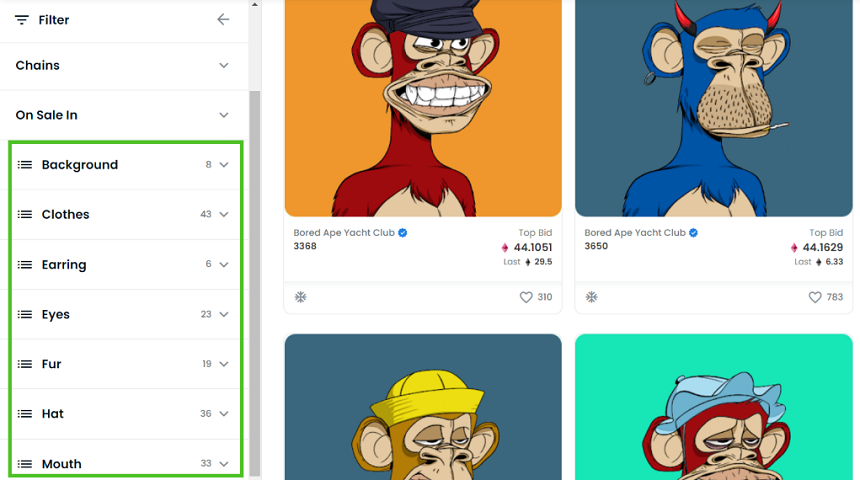
You follow up by planning out the NFT traits and rarities. Now, I know what you’re wondering. What the heck are NFT traits and rarities?
The images in each NFT collection consist of different traits, which help determine how rare each NFT is. Like with gold, scarcity builds value and the rarer the NFT, the more valuable it is. Therefore, adding multiple unique traits and features is recommended.
However, adding too many different traits can backfire, making the resulting art difficult for potential buyers to comprehend, so try to keep it classy. The biggest NFT trait is, of course, the subject matter and just like with normal art, it could be an animal, landscape, car, building, portrait, etc.
Other potential traits include the resolution, background, size, and style. The higher the resolution, the clearer the art and the more visible it will be when viewers zoom in and out. Low resolution can also work depending on the art style and what you’re going for in the final product.
Art size is similar to what you get with non-NFT art, with small, medium and large as potential options. Like with many other forms of art, your imagination is the ceiling.
Rare traits add more value to your NFT project but should be used sparingly. There are also the one-of-one and legendary traits that are the rarest of all. These are the most valuable of the bunch.
Avoid low-impact traits as they add little to no value to your NFT project and can even make your NFTs look plain, boring, and unappealing to potential buyers.
Step 5: Creating Your Digital Arts Token
You then need to upload metadata onto your NFT marketplace for the minting process. Acceptable file types for the metadata include JPG, GIF, PNG, MP3, 3D files, etc. You’ll also need to name each token.
While you can choose to mint unlimited tokens, it’s recommended that you only mint one at a time. You also need to choose between stand-alone and edition tokens. Stand-alone tokens are one-of-one options with no other copies produced, making the NFT more valuable.
Edition tokens allow you to make copies, although they will be numbered. Adding properties, levels, and other stats could also be useful to buyers exploring the different pieces of art in your NFT collection. Other necessary details include social links and image descriptions.
By the time you click “Create,” you’ll almost be done, although you still need to pay for the process with your Ethereum.
Finally, choose the payment tokens you want buyers to use for the NFTs and set the royalty percentage for future resales.
Step 6: Listing Your Artwork for Sale
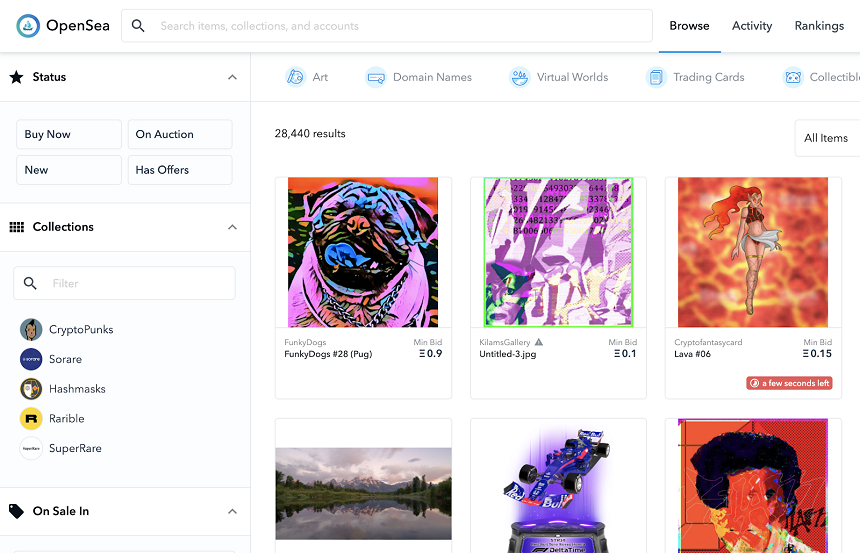
With the NFT collection complete, the next logical step is to list it for sale. Options here include a fixed-price listing or auction. Notably, listing the art for sale also requires you to pay some gas fees upfront.
Step 7: Promote Your Work
If you have a large following of art and NFT lovers, you can promote your work directly to them by providing links on your socials. Hopefully, some of them will share the links and allow you to reach an even wider pool of potential buyers.
FAQ
What programs do you need to make NFT art?
Most programs that allow you to make digital art, whether it’s Adobe Illustrator, Adobe Photoshop, Krita, Fotor, etc., can also be used to make NFT art. Each has its perks and downsides. For instance, Adobe Illustrator and Photoshop may have some steep learning curves if you’re new as a major downside. However, they’re highly versatile as well.
For some NFTs, programming knowledge may be necessary, but as noted above, this isn’t always the case. JavaScript is commonly used for NFT programming, so if you’re not proficient and want to learn more, we’ve listed the best Java books so you can select the one that appeals most to you.
Can a non-artist create NFT?
Given that you can download and use royalty-free images and even outsource, just about anyone can make NFTs. This includes even those without an art background.
Is NFT art worth making?
Like any other piece of art, NFTs are a risk. The current cryptocurrency crash makes it even worse. However, you just might be the next one to create and sell a multi-million dollar NFT. You also might not, but if you have some free time, some Ethereum, and a touch of creativity, it might be worth experimenting.
Final Thoughts
Now you know exactly how to create NFT art without coding.
Following the collapse of FTX, one of the world’s largest crypto exchanges, according to Forbes, some people fear this spells the end for digital assets. However, they have proven to be resilient and will likely be back. As such, having a few NFTs on your portfolio may be beneficial in the long run. Let’s not forget the possible millions in sales fees if you make something truly one-of-a-kind.
References
https://www.cnbc.com/2022/09/20/ether-eth-drops-15percent-since-ethereum-merge-as-traders-take-profits.html
https://www.forbes.com/sites/forbesstaff/article/the-fall-of-ftx/?sh=23e521887d0c

